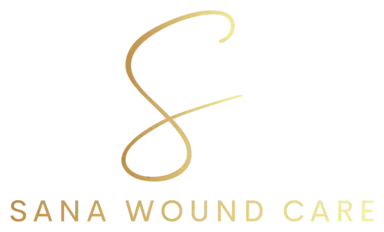Pressure relieving and redistributing devices are used to reduce prolonged pressure on specific parts of the body to prevent tissue damage and promote healing. Such devices are widely used to prevent and treat pressure ulcers, also called bed sores.
Bedsores are injuries to the skin and the tissue below the skin that are due to pressure on the skin for a long time. Bedsores most often arise on skin that covers bony areas of the body, such as the heels, ankles, hips, and tailbone. The people who are most at risk of bedsores have medical conditions that keep them from changing positions or moving. Specifically, people who spend most of their time in a bed or a chair are at risk.
Heel ulcers or sores can develop from prolonged pressure on the skin and underlying tissue. It is most common in the elderly who may be immobile and nutritionally challenged – and those with medical conditions such as diabetes, peripheral arterial disease, or spinal cord injury. Heel ulcers occur when pressure is applied to the heel for extended periods, cutting off blood flow to the localized tissue and causing skin and tissue damage. Usually, bed and heel sores can arise over hours or days. Most sores heal with treatment, but some never heal completely.
Use of Pressure Relieving Devices
There is a vast range of devices, including different types of mattresses, overlays, cushions, and seating pads designed to reduce pressure on the body and thereby prevent or heal pressure ulcers. Depending on the patient’s condition, the risk of developing pressure sores, or when the patient already developed pressure sores, requires its own method of relief.
Factors like the patient’s weight, age, and mobility play an important role in choosing the right device, which should also account for a person's wishes and tolerability of the device. At Sana Wound Care, we offer a wide selection of devices tailored to individual needs. Our range includes:
- Off-loading Wedges
- Off-loading Rolls
- Off-loading Boots
- Diabetic-Specific Off-loading Solutions
These devices are carefully selected to provide optimal support and relief, ensuring that each patient receives personalized care tailored to their unique circumstances. Our selection of pressure-relieving devices also includes:
- Pressure-relieving mattresses
- Cushions
- Pads
- Overlays
When Pressure Relieving Devices are Suggested
The first step in pressure ulcer prevention is simply to reposition patients who are unable to do this by themselves. Patients should be positioned adequately to minimize pressure and friction. This includes:
- Resting at a 30º tilt while in bed
- Provision of a pressure-relieving mattress/cushion
- An ergonomically good seating position, using cushions or pads.
Once a bedsore or pressure ulcer has developed, immediate treatment is required. Commonly used treatments over the years have included innovative mattresses, ointments, creams, solutions, dressings, ultrasonography (US), ultraviolet (UV) heat lamps, and surgery.
In choosing a treatment strategy at Sana Wound Care, we consider the stage of the wound and the purpose of the treatment (such as protection, moisture, or removal of necrotic tissue) as critical indicators.
Promoting Healing
With thorough and comprehensive medical management and pressure distribution devices, many pressure injuries may heal completely without the need for surgical intervention. Successful medical management of these injuries relies on the following key principles:
- Reduction of pressure
- Adequate debridement of necrotic and devitalized tissue
- Control of infection
- Meticulous wound care
High-Quality Care in Arkansas
At Sana Wound Care, we are dedicated to ensuring our patients achieve optimal wound healing through compassionate and high-quality care. Our approach is collaborative and multidisciplinary, utilizing the latest evidence-based technology to deliver exceptional results. Contact us now to learn more about our comprehensive wound care services. We can assist you on your path to healing!
